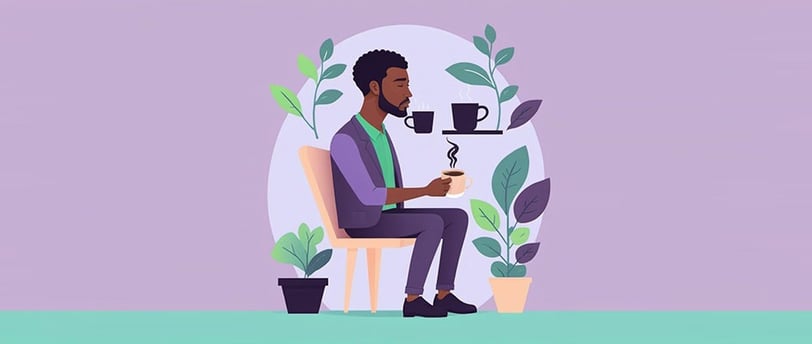The Habit Loop: Cue, Routine, Reward
Part 43 in our series, “5 Steps to a More Fulfilling Life.”
SELF HELP
Marcelo Silva
4 min read


The habit loop, consisting of cue, routine, and reward, is the fundamental framework that governs our habits. This simple yet powerful concept, popularized by Charles Duhigg in his book "The Power of Habit," offers valuable insights into how habits are formed and how they can be changed.
First, let's break down the components of the habit loop:
Cue: The cue is the trigger that prompts us to engage in a habit. It can be an external stimulus, such as a specific time of day, location, or event, or an internal cue, such as an emotion or thought. Cues signal to our brains that it's time to initiate a particular behavior or routine.
Routine: The routine is the habitual behavior itself—the action or series of actions that we perform in response to the cue. This is the part of the habit loop that is most visible and easily recognizable. Routines can vary widely, from simple actions like checking social media to more complex behaviors like exercising or studying.
Reward: The reward is the positive reinforcement or satisfaction that we derive from completing the routine. It serves as the motivation for engaging in the habit and reinforces the behavior, making it more likely to be repeated in the future. Rewards can be tangible, such as food or money, or intangible, such as a sense of accomplishment or relief.
By understanding the habit loop, we can begin to identify the patterns and triggers that drive our behavior. This awareness allows us to intervene at various points in the loop to change our habits and create new ones that better align with our goals and values.
For example, suppose you have a habit of snacking on unhealthy foods whenever you feel stressed (cue). The routine involves reaching for chips or candy to cope with your emotions, providing a temporary sense of comfort or distraction. The reward is the immediate gratification and relief from stress that comes from indulging in these foods.
To change this habit, you can experiment with different strategies at each stage of the habit loop. You might start by identifying alternative ways to cope with stress, such as deep breathing exercises or taking a short walk (routine). By replacing the unhealthy snack with a healthier alternative, you can still address the underlying need for comfort or distraction without resorting to unhealthy habits.
Additionally, you can modify the cues that trigger the habit by changing your environment or routines. For example, you could remove tempting snacks from your home or create a designated space for relaxation where you can unwind without turning to food.
Finally, it's essential to identify and reinforce the rewards associated with healthier habits. By focusing on the positive outcomes of adopting new behaviors, such as feeling more energized or achieving your long-term health goals, you can create a feedback loop that strengthens the new habit over time.
In conclusion, the habit loop provides a powerful framework for understanding and changing our habits. By becoming aware of the cues, routines, and rewards that drive our behavior, we can take proactive steps to replace unhealthy habits with more positive ones, ultimately leading to a happier, healthier, and more fulfilling life.
Ready for more? Click here to read the next post in this series, The Power of Habit Stacking.
Looking for something specific? The Table of Contents below offers quick links to all the posts in this series.
Table of Contents:
Introduction: 5 Steps to a More Fulfilling Life
Step 2: Cultivating a Growth Mindset
Copyright 2024 Mind, Body, and Spirit.blog. All Rights Reserved. Our website services, content, and products are for informational purposes only. Mind, Body, and Spirit.blog does not provide medical advice, diagnosis, or treatment. Displayed ads do not constitute endorsement or recommendation by Mind, Body, and Spirit.blog.
Home | Blog | About | Sitemap | Privacy Policy
